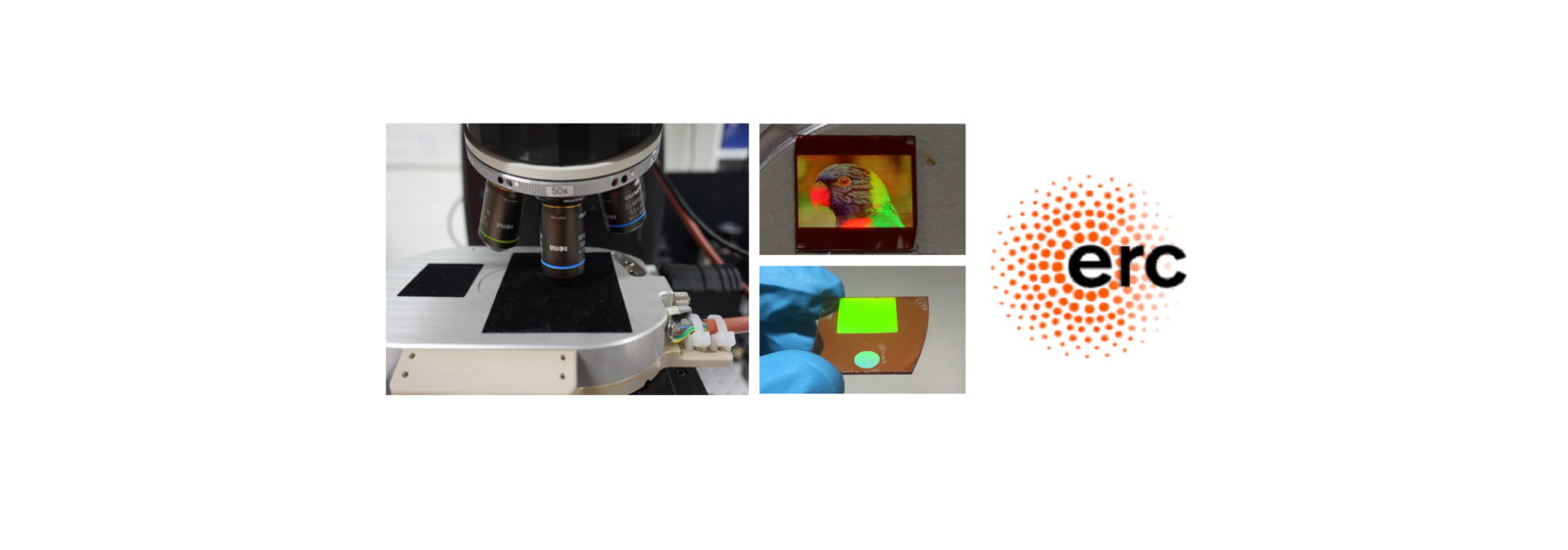Diffractive optical waveguides are the key technology for Augmented and Virtual Reality (AR & VR) displays. They are typically fabricated using nanoimprint lithography and reactive ion etching. This is a costly, time-consuming and difficult process, requiring fabrication and very precise alignment of three different diffractive layers, one for each RGB colour. To tackle the problem we have developed a novel method for fabricating diffractive optical elements using light-induced sub-micrometre scale surface structuring of azobenzene-containing films. The method allows for the creation of surface relief structures with varying heights and complex patterns, which are difficult to create using conventional lithography tools. Read more…
Professor Arri Priimägi receives ERC PoC grant for a project "Light-driven surface shaping for holographic optical elements"

The ERC Proof of Concept (PoC) grant will be used to realize the project aiming to harness photopatternable azobenzene thin films for AR/VR technologies. Congratulations Arri!
